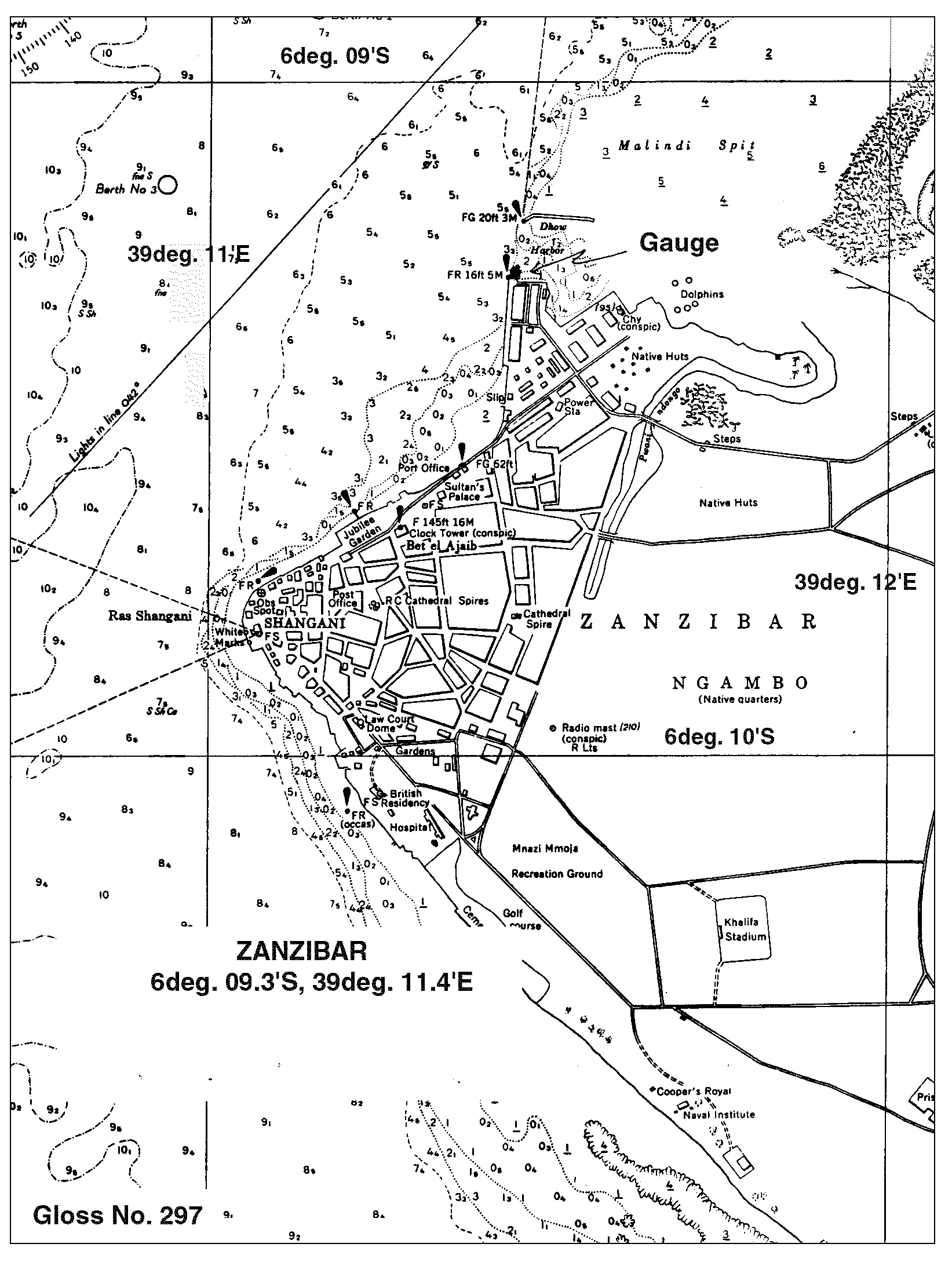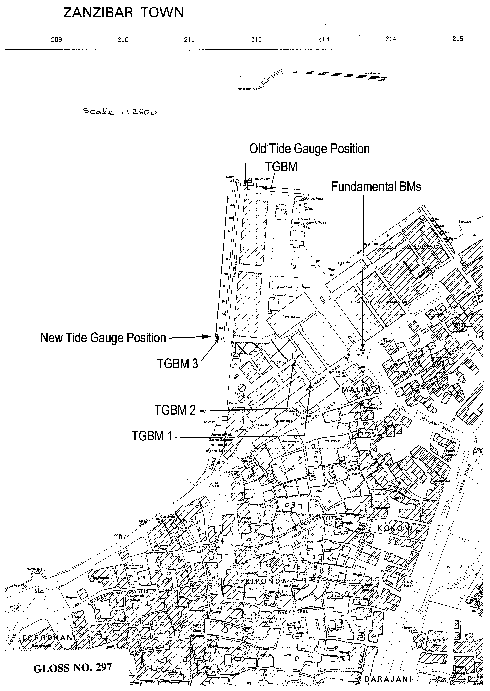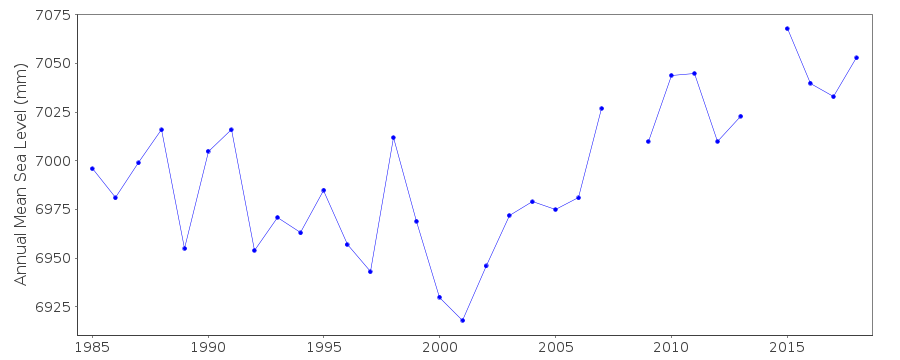GLOSS Station Handbook – Zanzibar
The GLOSS Station Handbook is currently being re-designed and upgraded.
Until a new version is available, the tide gauge station list below from the last version of the Handbook provides links to further details about each tide gauge in the GLOSS Core Network. Click column headings to sort the station list table. Click the GLOSS number buttons to view the station information.
Station information
| General | |
|---|---|
| Gloss number | 297 |
| Station name | Zanzibar |
| Country | Tanzania |
| Time zone | 045E, GMT + 3hrs |
| Latitude (+ve N) | -6.15 |
| Longitude (+ve E) | 39.18333 |
| Ocean | Indian |
| Observation periods | 1950s Munro, 1984- |
| Responsible country | Tanzania |
| Authority responsible for tide gauge | Zanzibar Department of Surveys and Urban Planning, Commission of Lands and Environment, P.O. Box 811, Zanzibar, Tanzania |
| GLOSS contact | Tanzania |
| Committed to GLOSS | Yes |
| Operational | Yes |
| Location map | |
| Instrumentation | |
| Float | Yes |
| Pressure | No |
| Bubbler | No |
| Acoustic | No |
| Radar | No |
| Data | |
| Digital data | Yes |
| Data acquisition rate | Recording at 10 minute intervals, filtered to hourly heights. |
| Fast delivery data at UHSLC | Data 151 File format |
| High frequency data at BODC | Data 297 Document 61391 Document 42146 |
| High frequency data at UHSLC | Data 151a Document 151a File format |
| Real-time data available | Yes |
| Real-time data transmitted to GLOSS Fast Centre | |
| Additional parameters (real-time) | None |
| Benchmarks | |
| Tide gauge benchmark | Old TGBM - about 30.0m from tide gauge (521209E, 9319992N) |
| Benchmark relationships | BMI at Malindi roundabout = 3.80m above Land Survey Datum (1984, 1987) Mean Sea Level is 2.08m above Chart Datum |
| Auxiliary benchmarks | TGBM 1 is 3.709m above LSD TGBM 2 is 3.750m above LSD TGBM 3 is 3.925m above LSD |
| Data at PSMSL | |
| Annual MSL (RLR) data | RLR 1600 |
| Annual MSL (RLR) plot | |
| MSL method | average of daily values |
| PSMSL code | 1600 |
| Other relevant codes | UHSLC 151 |
| Additional information | |
| Other relevant information | Gauge re-located in Zanzibar Harbour during 1990. Daily values calculated using 119-point convolution filter (Bloomfield, 1976) centred on noon applied to the hourly data with respective periods of the 95, 50 and 5% amplitude points at 124.0, 60.2 and 40.2 hours. |
| Last updated | 26 September 1992 |



